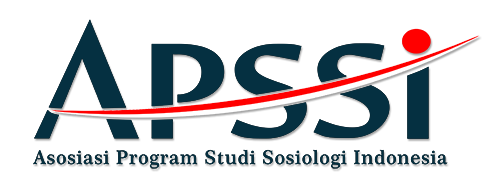Author Guidelines
- The article has not been published in other media and does not contain element of plagiarism.
- The article can be a result of research or conceptual articles or the application of theory, as Wells as case reports or book reviews. The article can be written in Indonesian or English (preferable) 5000-7000 words for 15-25 pages including references and tables with 1.5 space (or after layout using space 1 with minimum pages 10 excluding references).
- In the article, the author(s) name is attached and the author(s)’ name order must be agreed by all authors (if the author is more than two), generally based on the contribution, and all authors are responsible for the content of the article. Please add English title for your article.
- The article writer must be accompanied by address, including name of the university where the authors study and the origin author(s)’ institutions, as well as the email address. The article must be along with an abstract in Bahasa and English with a maximum word count of 200-300 words in an essay format.
- INTRODUCTION contains background of the problem; hypothesis (if any); the purposes of research; generally the introduction is not too long, only 3-4 paragraphs or 2 pages. Literature review is not written separately from the introduction, it means that literature review is included in INTRODUCTION. Reference should be a primary reference, relevant, and up to date; not too extensive meaning that the literature review is not too broad; and do not quote from someone else ,for example ... Ahmad in Badu.
- Method in the article contains the subject and the object of research that are described in detail; if method refers to the standard procedures, then write the default and does not refer to the practicum procedures. The author(s) should not to use the command line.
- DISCUSSION includes: systematic presentation, only the data/information related to the research objectives; simplify the tables and use the open table, and image maps more focused on the object of study and the file size is not too large and complicated (pursued in JPG format and submit in supplement/additional files separately); tables and figures are numbered. The purpose of DISCUSSION is to determine how the result of the study is discussed by the author(s), and the author(s) also limits the discovery.
- CONCLUSION is typed in bold capital letters of Times New Roman with the font size 12. Conclusion is advised to mention the recommendation or suggestion that include in paragraphs and not separated.
- The articles is computer-typed in A4 paper with the top and left margins as 4 cm, bottom and right margins as 3 cm using Times New Roman font type, with the font size as 12 and 1.5 spacing (before= 0 pt and after= 0 pt) for author names, introduction, discussion, and conclusion. The abstract is typed using Times New Roman font type, with the font size as 10 and single spacing (before= 0 pt and after= 0 pt).
- Title text in Bahasa Indonesia consists of 12 words maximally, while for English consists of 10 words maximally. It is written with Times New Roman with the font size of 14 in bold.
- The writing of ABSTRAK for Bahasa and the word ABSTRACT for English articles, INTRODUCTION, DISCUSSION, CONCLUSION, title and number of table, title and of figures using the font size is 12 of Times New Roman in bold.
- The notes can’t be written as foot notes but be written as body notes.
- The number and title of table is written upper the table but the number and title of figure is written under the figure.
- Writing format systems of a bibliography and references for Jurnal Sociora is using APA Writing Style, which is
(a) the source of the quote is stated in scientific paper must exist in the Bibliography, and vice versa;
(b) The literature listed in the Bibliography is referenced literature ad cited in scientific papers;
(c) Bibliography is written in single-spaced, sequentially in alphabetical order without number;
(d) If the literature is written by one person, the author name written is the last name first, followed by the initials of first name and middle name, followed by the year, the title and the other identity of the referenced;
(e) If the authors are more than two, the first author's name is written as a rule "d", continued writing the second author's name and so on as follows: first name and middle name (abbreviated) followed last name. (For the second and subsequent authors , writing of first name/middle (initial) and last name do not need to be reversed as the first author)
(f) the Writing of Bibliography may not use “et al” as substitutes the name of the author of the second and so on
(g) Method of writing every Bibliography and vary according to the type of literature as the reference. - Systematics of writing: (a) title, (b) the identity of the author, (c) the date of submission of the manuscript, (d) abstract, (e) keyword, (f) introduction (with no heading and section), (g) discussion, (h) conclusions, (i) bibliography / reference list.
- Jurnal Sociora’s writing style should refer to the Minister of National Education Regulation No. 46 Year 2009 on General Guidelines for Ejaan Bahasa Indonesia (EYD) yang Disempurnakan.
- It should be noted that the manuscript for Jurnal Sociora does not use footnotes in the text because it can distract the reader.














